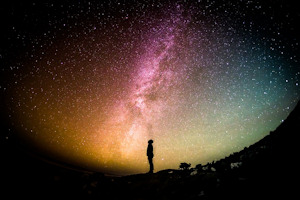Billions of galaxies set to star in the ‘greatest movie ever made'
23 May 2016
The World's first motion picture of our Universe - which is being dubbed the greatest movie ever made - is to be produced by astronomers from across the world, including from the University

The film, which could feature dangerous asteroids and uncover some of the mysteries of dark matter and dark energy, will be recorded on the world’s largest digital camera.
When it is completed, the Large Synoptic Survey Telescope (LSST) will be able to take images of the sky that cover over 40 times the area of the moon, building up a survey of the entire visible sky in just three nights. That means billions of galaxies, stars and solar system objects will be seen for the first time, and monitored over ten years. UK astronomers will now play a key part after funding from the Science and Technology Facilities Council confirmed the UK’s participation.
“What is unique about LSST is that each of its images covers a large area of sky to a depth that captures faint objects, and that it takes these images really quickly”, said Project Scientist Sarah Bridle, from The University of Manchester. “That combination of area, depth and speed means that we can do lots of different science with the same dataset.”
LSST will build up a very detailed map of billions of galaxies, with approximate distances to each, from which we will learn about the mysterious dark energy that seems to be accelerating the expansion of the Universe. But, equally, it will look for changes in the sky from night to night; both moving objects, like asteroids, and new ones, like supernovae, that appear where nothing had been seen before. Covering each patch of sky over 800 times during its decade of operations, it will construct the very first motion picture of the Universe.
When it starts operating, it will generate one of the largest scientific datasets in the World. The LSST is a ‘synoptic’ survey because it will form an overall view of the Universe: billions of objects will be imaged in six colours, spanning a volume of the Universe that is larger than any previously explored.
Steven Kahn, the LSST Director said: “I am delighted that STFC is supporting UK participation in LSST. It is great to see UK astronomers engaging in preparation for LSST, and we look forward to seeing our collaboration develop over the coming years. LSST will be one of the foremost astronomy projects in the next decades and the UK astronomical community will contribute strongly to its success. The telescope is being built in the Chilean Andes. Conditions there are some of the driest on Earth, making it the ideal position for observing.”
The LSST will provide unprecedented access to data, allowing for new kinds of citizen science and discovery. Discoveries made by the LSST will also be used to construct educational materials that will be freely available to schools and the public.
The telescope will achieve first light in 2020, and its main sky survey will begin in 2022. Like all good movie franchises, the LSST story will unfold in stages, from a preview in 2023 to a finale in 2033.
